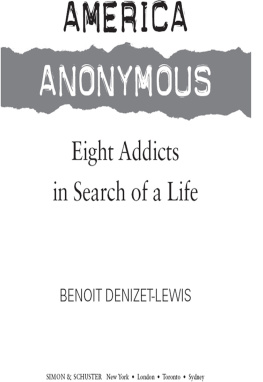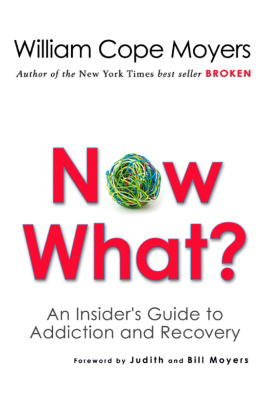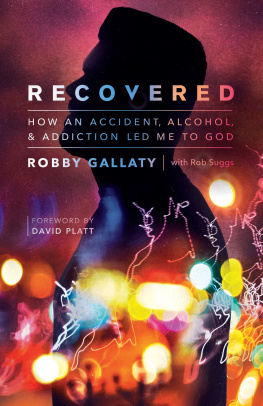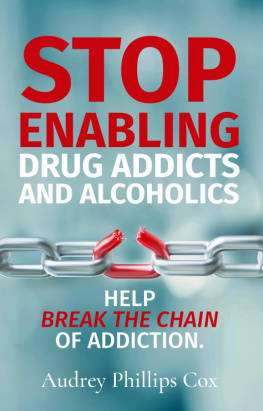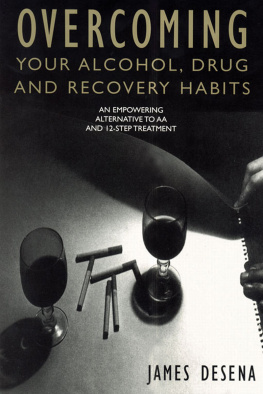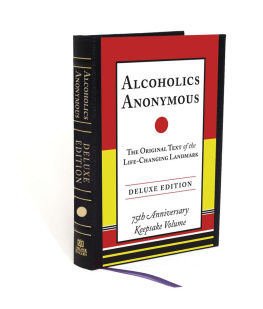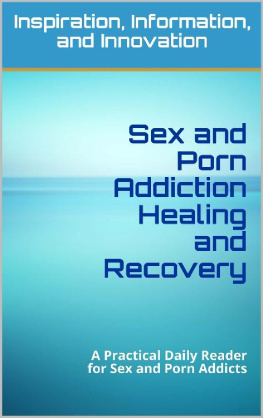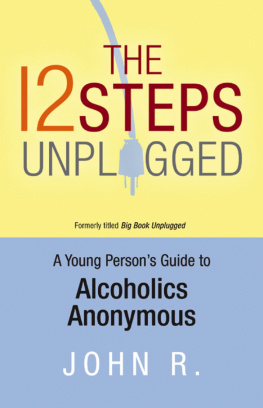From Death Do I Part is the account of a souljourney: a journal of liberation, authentically lived, deeplyexperienced and vividly written. The inspiring story of one person,it speaks to the challenges faced by many and to the possibilitiesinherent in us all.
Gabor Mate M.D., author ofCanada's #1 best seller,
In the Realm of Hungry Ghosts: Close Encounters WithAddiction
"For Amy, the process of overcoming addiction is aprocess of moving forward--not of labeling herself, not ofrehashing her failures and abuse, not of blaming herself or others.She knows--the decades she spent doing these things never allowedher to quit drugs, alcohol, eating problems, cigarettes. Somethingelse did. She needed a new way of thinking about herself and life,one not anchored in the past, or in her trauma, or in the bromidesof the 12 Steps or of psychiatry.
Stanton Peele, Ph.D., J.D., authorof Love and Addiction,
7 Tools to Beat Addiction, and The LifeProcess Program
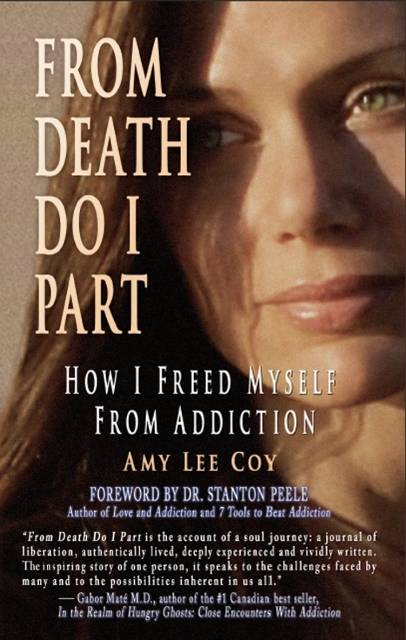
FROM DEATH DO I PART:
How I Freed Myself From Addiction
By Amy Lee Coy
SMASHWORDS EDITION
* * * * *
Copyright 2010 by Amy Lee Coy
Paperback available
Second Printing 2012
ISBN 978-0-692-00971-0
www.fromdeathdoipart.com
All rights reserved, including the right ofreproduction
in whole or in part in any form.
Smashwords Edition License Notes
This ebook is licensed for your personalenjoyment only. This ebook may not be re-sold or given away toother people. If you would like to share this book with anotherperson, please purchase an additional copy for each person youshare it with. If you're reading this book and did not purchase it,or it was not purchased for your use only, then you should returnto Smashwords.com and purchase your own copy. Thank you forrespecting the author's work.
* * * * *
FROM DEATH DO I PART:
How I Freed Myself From Addiction
The most beautiful people we have known arethose who have known defeat, known suffering, known struggle, knownloss, and have found their way out of the depths. These personshave an appreciation, a sensitivity, and an understanding of lifethat fills them with compassion, gentleness, and a deep lovingconcern. Beautiful people do not just happen.
ElizabethK blerRoss
Contents
by Stanton Peele, Ph.D., J.D
Acknowledgements
M ygreatest appreciation and love go out to everyone who helped mecomplete From Death Do IPart :
My sister, Adriana, my step-father, Ron, andmy husband, John, for the countless hours they spent editing mywork and helping me become a better writer. It was the brilliantcombination of their expert skills and different writing stylesthat allowed me to find and express my own writing abilities.
In addition to sharing with me his greatprofessorial writing advice and his musical partnership, my husbandalso provided me with a most valuable element in my healingprocessthe psychological space I needed to make the discoveries Ihave written about in this book. (He also never complained aboutthe sweaty bed sheets night after night that were a result of mysevere alcohol withdrawalin fact, he washed them for me.)
Without the deep love and support from mymother, Susan, this book would not be what it is today. There aresome things that many of us hope never to be reminded of, yet,while writing this book, my mother always encouraged me to saywhatever I needed to, however painful it might be. In her own life,she has shown the greatest courage, and I thank her with all myheart as I, and so many others, continue to benefit from herincredible bravery, beauty, strength and wisdom.
My father, Larry, and my brother, Matt, alsoplayed an important part in the development of this book bysupporting me with their love and enthusiasm. It meant a lot to meto have their encouragement.
I give my deepest gratitude and love to allof you, my family. I also want to give my love and appreciation toeveryone who struggles with addiction for if you did not exist, Iwould have believed I was truly alone and would likely never havefound my way out of the darkness.
Many thanks to everyone,
Amy
Foreword
A my Lee Coy is a unique woman. Not unique because she rejectedpsychiatric medications, rehab, and Alcoholics Anonymous on her wayto sobriety after two decades of substance abuse, depression, andalcoholism. Many people perform versions of this miraculousself-cure. In fact, a majority of alcoholics and addicts recoverfor and through themselves, outside of the halls of treatmentprograms and AA meetings.
She is unique because of her bravery, herclarity of vision, and her abilityand her willingnessto expressthese things.
Amy Coy always felt alonepartly because hermother left her alone to join a cult. Partly because hergrandfather sexually molested her as a child. Partly because,through hundreds of therapy sessions and AA meetings and rehabgroups from the age of 13 on, her own inner lights never turned on.In fact, the psychiatric and rehab facilities she frequently foundherself in seemed intent on beating her spirit out of her, andcertainly not in giving her room to find her core self.
Finally, at the age of 35,writhing on the floor in a small Pennsylvania town as she withdrewfrom alcohol and tobacco, she saw her first beacon of light: Shewould talk to all of those other lonely people, the ones wholikewise hadnt been turned on by psychiatry, medications, and the12 Steps. From this epiphany sprang the germ of From Death Do I Part .
And you, lucky reader, are the beneficiaryof her fulfillment of this promise to describe her own personalpath, the promise that has maintained her sobriety since she firstimagined you reading her words. Helping you to help yourself is hergoaljust as she finally discovered that only she could helpherself. Only then could she let go the despised inner self she hasreplaced with a generous, creative, comely spirit that matches herradiant outward appearance. A beauty she never before accepted, orbelieved, she had.
* * * * *
Amy was always toldlike you may havebeenthat AA and the 12 Steps were the only way for her to recover.That psychiatric meds were the only solution for her depression.But all of these things only made her feel worse about herself. AndAmy is not alone in this experienceeven AAs biggest fansacknowledge that only a minority (really a quite small minority)stick to and succeed at the program. Most prescription takersdont find in them a permanent resolution for their mood disorderseither. And a distinct minoritylike Amywill attempt suicide whileon these meds.
Maybe it was the way professional helpersalways seemed to disdain her and to begrudge her the time they werespending talking to her. All they wanted her to do was tocooperate, to be silent, to take the meds they gave her. But Amywasnt prepared to be obedientwhich first got her in trouble whenshe was kicked out of school at 14. And, she figured, if she weretaking prescriptions to modify her true feelings, why not drink?That worked better for her, after all.
She was abused in several such institutionsas a young teen. After that, she began a modeling career, developedan eating disorder, was married twiceonce to an internationaljet-setting semi-retired lawyer, once to a university professor.And she drank, always drank, to fight off the inner demons, theself-contempt, and the inability to appreciate the world aroundher.
* * * * *
Amy doesnt describeherself as being in recovery. She doesnt want to center heridentity around her drinking or not drinkingwhich is one morereason AA meetings arent for her. For one thing, once she soberedup, she was too busy. Busy writing music, a childrens book,andmost important of all From Death Do IPart . She just needed to clear the airwavesto get to these tasks.
Next page

